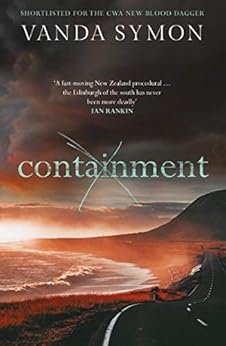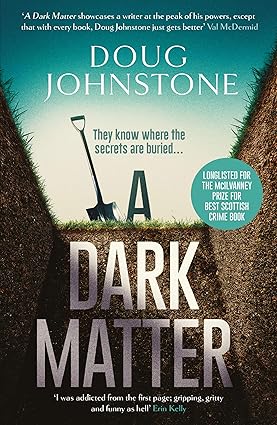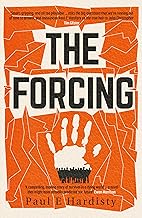The hot days of summer have well and truly
arrived. That’s a good reason to forego
physical activity and find a cool place to read a good book. Here are some titles I’ve enjoyed which might
pique your interest.
A Dark Matter by Doug Johnstone
If you’re a lover of mysteries, you should get to
know the Skelfs, three women from one family.
Dorothy is 70 years of age, her daughter Jenny is in her mid-40s, and her
granddaughter Hannah is 20. After the
death of the family patriarch, the three take over the family’s funeral home
and private investigator business in Edinburgh.
Each woman has a case to solve.
Dorothy sets out to find out why her husband had been paying an unknown
woman a stipend every month for years. Jenny
is hired by a woman to find proof that her husband is cheating on her. And when her roommate Mel goes missing,
Hannah is determined to find her. There
are currently four books in the series which gets better with each
instalment. A Dark Matter is followed by The
Big Chill, The Great Silence, and
Black Hearts.
Demon Copperhead by Barbara
Kingsolver
If you like to check out award-winning books, this
is the one for you. It won the Pulitzer
Prize, the Women’s Prize for Fiction, and seemingly every major news outlet’s
year-end roundup. Damon Fields, aka
Demon Copperhead, is born to a widowed, teenaged, rehab-prone mother in a
single-wide trailer in southwest Virginia.
His impoverished childhood is not easy, especially after his mother
becomes involved with an abusive man.
Then from the age of 11, Demon finds himself within the foster care
system which has him bouncing from one dysfunctional family to another. Will he be able to escape the brutal life
that seems to be his destiny?
The Forcing by Paul E. Hardisty
If you favour speculative fiction, this dystopian thriller from a
Canadian environmental scientist should be on your to-read list. Angry at years of denial and inaction to
address issues such as climate change which threatened the world, a government
of young people has taken control of a unified North America. All those older than a prescribed age are
held responsible for the state of the planet so are punished by having their assets
confiscated before they are forcibly relocated to abandoned towns in the
southern U.S. The narrator David and his
wife May are moved from Calgary to Brownwood, Texas. There they share an apartment with five other
people. Conditions are harsh in what is
really an internment camp, but it’s his witnessing some violent incidents which
convinces David they must escape. This
book’s realism is what is most terrifying.
Stolen by Ann-Helén Laestadius
If you enjoy reading translated books from around
the world, this award-winning novel translated from Swedish might appeal. Focusing on the Sámi living in northern
Sweden, the novel opens with Elsa, the 9-year-old daughter of a reindeer
herder, witnessing the killing of her beloved reindeer Nástegallu by Robert
Isaksson. Because he threatens death if
she speaks, she remains silent about his identity. In the second part, Elsa is 19. Reindeer continue to be slaughtered, but the
police do nothing. Frustrated with
inaction, Elsa speaks to the media, but her outspokenness results only in her
becoming more of a target for Isaksson so that her life is in danger. The book is very informative about Sámi
culture.
Canadian
fiction is a particular interest of mine, so I have to recommend some recent
novels by Canadian writers:
Far Cry by Alissa York
Most of the novel is set at a fish cannery on the northwest coast of
British Columbia. It is 1922. Anders Viken, the camp’s storekeeper during
salmon fishing season and its watchman during the winter, is writing an account
of his life beginning with his departure from his home in Norway when he was a
young man. His story is intended for
18-year-old Kit Starratt for whom he is an honorary uncle. Kit’s mother Bobbie recently disappeared and
her father Frank was found drowned near his boat. Having known Kit’s parents for years, Anders
also tells of how Bobbie and Frank met and details important events in their
lives together. York is a master
storyteller, and her novel includes historical detail, a love story, and a
mystery.
Snow Road Station by Elizabeth Hay
This novel features an older protagonist examining the relationships in
her life and coming to terms with aging.
Lulu Blake, 62, has been an actor her entire life. Then in 2008, while starring in a play in
Ottawa, she forgets her lines. Ashamed
and panicked, she flees to Snow Road Station, a tiny village in eastern
Ontario, where she stays with her best friend Nan. A family wedding and maple sugaring keep her
occupied as she contemplates what she really wants to do with her life. The book has lyrical prose and thematic depth. And it even mentions Killaloe!
The Good Women of Safe Harbour by Bobbi French
Fifty-eight-year-old Frances Delaney has just received a terminal
cancer diagnosis. As she thinks back on
her life, we learn about her childhood in a small Newfoundland fishing
village. A number of tragedies led to
her leaving to St. John’s where she worked as a housekeeper. With the help of Edie, the teenaged daughter
of her last employer, Frances returns to Safe Harbour where she reconnects with
Annie Malone, her childhood friend from whom she has been estranged for 40
years. Despite many sad moments, the
book is also joyful and life-affirming.
The Berry Pickers by Amanda Peters
There is a dual narrative. Joe,
dying from cancer, tells the story of his sister Ruthie’s disappearance decades
earlier when he and his family travelled as usual to Maine to pick
blueberries. Her mysterious vanishing
has a devastating impact on Joe’s entire life. In alternating chapters we meet Norma who
grows up in an affluent family in, though her father is emotionally distant and
her mother is suffocatingly protective.
Norma always has a sense of disconnection from her family and is
troubled by dreams that she quickly learns no one wants her to mention. After the death of both parents, she
discovers family secrets which set her looking for the full truth. The plot is predictable, but it’s the novel’s
examination of the effects of trauma and the treatment of First Nations peoples
that impresses.
Complete reviews of all books mentioned (and many more) can be found on
my blog at https://schatjesshelves.blogspot.com/.
Happy Reading!







.jpg)









